Competition for red blood cells can enhance Plasmodium vivax parasitemia in mixed-species malaria infections
- PMID: 16837717
- PMCID: PMC2483695
Competition for red blood cells can enhance Plasmodium vivax parasitemia in mixed-species malaria infections
Abstract
We assess the consequences of competition for red blood cells (RBCs) in co-infections with the two major agents of human malaria, Plasmodium vivax and Plasmodium falciparum, using differential equations to model the population dynamics of RBCs and parasites. P. vivax parasitizes only the youngest RBCs, but this can reduce the broader RBC population susceptible to P. falciparum. We found that competition for RBCs typically causes one species to suppress the other, depending on their relative reproduction rates and timing of inoculation. However, if the species' reproduction rates are nearly equal, transient increases in RBC production stimulated by the presence of P. falciparum may boost P. vivax parasitemia above its single-species infection level. Conversely, P. falciparum parasitemia is rarely enhanced above its single-species level. Furthermore, transients in RBC production can induce coupled oscillations in the parasitemia of both species. These results are remarkably robust to changes in model parameters.
Figures



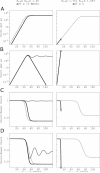
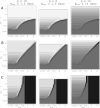
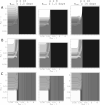
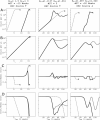
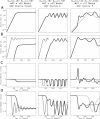
Similar articles
-
Blood-stage dynamics and clinical implications of mixed Plasmodium vivax-Plasmodium falciparum infections.Am J Trop Med Hyg. 1999 Sep;61(3):367-74. doi: 10.4269/ajtmh.1999.61.367. Am J Trop Med Hyg. 1999. PMID: 10497972 Free PMC article.
-
Haematological response in experimental human Plasmodium falciparum and Plasmodium vivax malaria.Malar J. 2021 Dec 20;20(1):470. doi: 10.1186/s12936-021-04003-7. Malar J. 2021. PMID: 34930260 Free PMC article.
-
Plasmodium falciparum, but not P. vivax, can induce erythrocytic apoptosis.Parasit Vectors. 2014 Oct 18;7:484. doi: 10.1186/s13071-014-0484-8. Parasit Vectors. 2014. PMID: 25325923 Free PMC article.
-
Review and recent progress: the mathematical modeling of mixed species Plasmodium infections.Southeast Asian J Trop Med Public Health. 2000;31 Suppl 1:69-74. Southeast Asian J Trop Med Public Health. 2000. PMID: 11414463 Review.
-
Might Interspecific Interactions between Pathogens Drive Host Evolution? The Case of Plasmodium Species and Duffy-Negativity in Human Populations.Trends Parasitol. 2017 Jan;33(1):21-29. doi: 10.1016/j.pt.2016.09.010. Epub 2016 Oct 17. Trends Parasitol. 2017. PMID: 27765439 Review.
Cited by
-
Co-infection with Leucocytozoon and Other Haemosporidian Parasites Increases with Latitude and Altitude in New World Bird Communities.Microb Ecol. 2023 Nov;86(4):2838-2846. doi: 10.1007/s00248-023-02283-x. Epub 2023 Aug 22. Microb Ecol. 2023. PMID: 37608162
-
On the control of acute rodent malaria infections by innate immunity.PLoS One. 2010 May 6;5(5):e10444. doi: 10.1371/journal.pone.0010444. PLoS One. 2010. PMID: 20463903 Free PMC article.
-
Host control of malaria infections: constraints on immune and erythropoeitic response kinetics.PLoS Comput Biol. 2008 Aug 22;4(8):e1000149. doi: 10.1371/journal.pcbi.1000149. PLoS Comput Biol. 2008. PMID: 18725923 Free PMC article.
-
Revealing mechanisms underlying variation in malaria virulence: effective propagation and host control of uninfected red blood cell supply.J R Soc Interface. 2012 Nov 7;9(76):2804-13. doi: 10.1098/rsif.2012.0340. Epub 2012 Jun 20. J R Soc Interface. 2012. PMID: 22718989 Free PMC article.
-
FY polymorphisms and vivax malaria in inhabitants of Amazonas State, Brazil.Parasitol Res. 2010 Apr;106(5):1049-53. doi: 10.1007/s00436-010-1745-x. Epub 2010 Feb 17. Parasitol Res. 2010. PMID: 20162434
References
-
- White NJ, Breman JG. Malaria and babesiosis. In: Braunwald E, Fauci AS, Isselbacher KJ, Kasper DL, Hauser SL, Longo DI, Jameson JL, editors. Harrison's Principles of Internal Medicine. McGraw-Hill; New York: 2001. pp. 1203–1213.
-
- Miller LH, Baruch D, Marsh K, Doumbo OK. The pathogenic basis of malaria. Nature. 2002;415:673–679. - PubMed
-
- Knowles R, White RS. Studies in the Parasitology of Malaria. Indian Med Res Memoirs No. 18. Thacker, Spink, and Co.; Calcutta, India: 1930.
-
- Cohen JE. Heterologous immunity in human malaria. Q Rev Biol. 1973;48:467–489. - PubMed
Publication types
MeSH terms
Grants and funding
LinkOut - more resources
Full Text Sources
